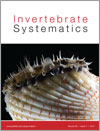IS13015Systematics and biology of the aberrant intertidal parasitoid wasp Echthrodesis lamorali Masner (Hymenoptera : Platygastridae s.l.): a parasitoid of spider eggs
Rediscovery of the South African endemic wasp Echthrodesis lamorali, an egg parasitoid of intertidal spiders, has enabled an assessment of the species’ evolutionary relationships. Molecular sequence data determined that this species is related to other southern hemisphere wasps using silk encased eggs as hosts. Unravelling the biology and evolutionary relationships of this tiny wasp allows for an appreciation of the evolutionary history of an ecologically important group of insects.




